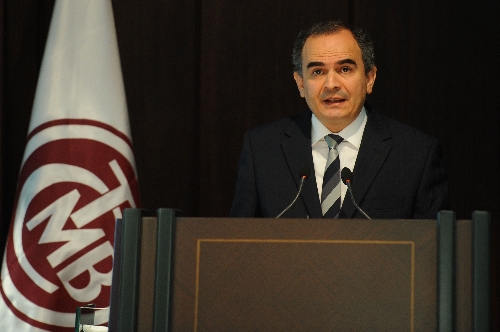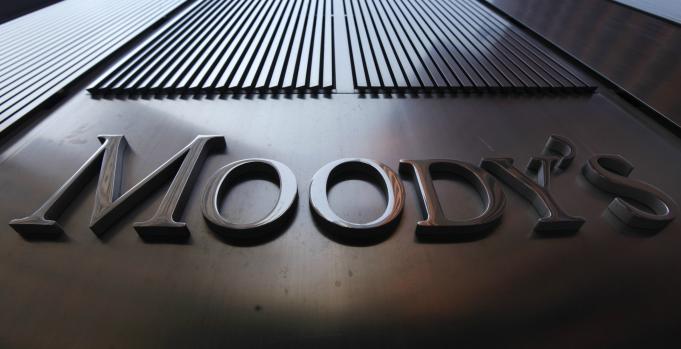Report: Economic Indicators of Turkey – February 2012
 A GENERAL LOOK : Despite the continued downward risks to world economy, global markets started the new year with a positive sentiment.
A GENERAL LOOK : Despite the continued downward risks to world economy, global markets started the new year with a positive sentiment.
The impacts of the favorable developments in global financial markets were also effective on the domestic markets. ISE-100 index increased around 15% from its lowest level in January when the index declined below 50.000 threshold.
During this period, TL appreciated against USD and the currency basket while the benchmark interest rate decreased below 10% for the first time since November 2011.
On the other hand, Turkish Treasury has entered a heavy borrowing period which will last until May. During this period, in addition to the own macroeconomic dynamics of Turkish economy, the course of the global risk appetite will be influential on the borrowing costs of the Treasury.
CBRT announced the first Inflation Report of 2012. CBRT stated that the signals increased pointing out a further delay in the normalization of monetary policies of advanced economies.
Thus, to keep the inflation in line with the targets CBRT announced that tight stance and flexibility of the monetary policy should be kept.
GROWTH: According to Turkstat, industrial production index increased by 8.4% in November compared to the same month of the previous year. Despite rapid annual increase inthe industrial production index, the seasonal and calendar adjusted industrial production index decreased by 2.5% compared to the previous month and confirmed the slowdown in economic activity.
UNEMPLOYMENT: According to the Household Labor Force Survey, in October the unemployment rate fell by 2.1 points to 9.1% compared to the same month of the previous year. In the same period, seasonally adjusted unemployment rate was realized at 9.4%.
FOREIGN TRADE DEFICIT: In December, exports increased by 5.6% while imports rose by only 0.2%, compared to the same month of the previous year. Monthly foreign trade deficit,which contracted in November on annual basis for the first time since October 2009, also decreased by 7.2% in December compared to the same month of the previous year and was realized as $8.1 billion. As of the whole year, in 2011 foreign trade deficit widened by 47.7% compared to 2010.
BUDGET EXPENSES & REVENUES: Central government budget deficit, which was TL40 billion in 2010, declined to TL17.4 billion in 2011. On the other hand, primary surplus, which totalled TL8.2 billion in 2010, almost tripled to TL24.8 billion in 2011.
Although 2011 was an election year, it was noteworthy that the budget discipline on the expenditure side was maintained. Non-interest expenditures increased by 10.2% compared to 2010 while interest expenditures decreased by 12.6%. Thus, the increase in total budget expenditures were limited to 6.4% and showed a consistent performance with the year-end targets.
In terms of budget revenues, a positive performance beyond the targets was observed. Strong tax revenues in parallel with buoyant domestic demand, as well as contribution of the restructuring of public receivables were effective in this development. Thus, in 2011, tax revenues increased by 20.5% compared to 2010. According to the statement by the Minister of Finance, the central government budget deficit to GDP ratio is estimated to have realized as 1.4% in 2011, below the Medium Term Program target rate of 1.7%
COMMENTS & EXXPECTATIONS FROM CBRT: CBRT, announced the first Inflation Report of 2012. It stated that the signals increased pointing out a further delay in the normalization of monetary policies of advanced economies. Thus, to keep the inflation in line with the targets CBRT announced that tight stance and flexibility of monetary policy should be kept.
Under the assumption that the tight policy stance would be effective for a while, annualized credit growth would be around 15% and TL would follow a moderate appreciation trend, CBRT expects the year end inflation, with 70% probability, between 5.1% and 7.9% (mid-point of 6.5%) at the end of 2012, and between 3.3% and 6.9% (midpoint of 5.1%) at the end of 2013. CBRT expects the inflation to stabilize around 5% in the medium term.
BANKING SECTOR
Deposits: According to the BRSA’s Weekly Bulletin, as of January 20th, 2012, total deposit volume decreased by 1.8% compared to the end of 2011 and was realized as TL717.9 billion. During this period, TL deposits decreased by 2.1% while FX deposits in TL terms decreased by 1.2% parallel to the fall in FX rates.
Credit Volume: In the first three weeks of 2012, total credit volume decreased by 1.3% to TL684.5 billion compared to year-end 2011. In this period, while TL credit volume decreased by only 0.3%, the decline in total credit volume mainly stemmed from the decrease in FX loans in TL terms as a result of the fall in FX rates
Securities portfolio: Securities portfolio of the banking sector declined by 0.3% in the first three weeks of 2012 compared to the end of 2011. During this period, TL securities increased by 2.1% while FX securities in USD terms decreased by 8.0%.
EXPECTATIONS: The problems originating from the Euro Area are expected to be on the top of the agenda of the markets in 2012 as well and continue to pose risk to global economy. In this context, several international institutions, including the IMF and the World Bank have revised their global economic growth forecasts for 2012, downwards.
During 2012, the economic activity is estimated to follow a weak course in advanced economies in particular, thus the normalization of monetary policies in these countries would take a longer time.
In Turkey, it is expected that the CBRT would continue its tight monetary stance for a while to keep the inflation in line with the targets. Thus, the slowdown in domestic economic activity is expected to continue while the annual increase in credit volume would decelerate.
compiled by editor, BTT
22.02.2012
source: isbank.com.tr




